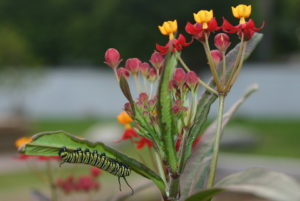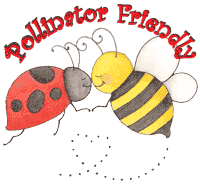[vc_row css=”.vc_custom_1461653343916{background-color: #0099ff !important;}”][vc_column width=”1/6″][/vc_column][vc_column width=”2/3″][vcex_spacing size=”50px”][vc_single_image image=”7508″][vcex_spacing][vc_column_text]
ATTRACTING BUTTERFLIES
[/vc_column_text][vc_column_text]
MAKE THEM WELCOME AND THEY WILL COME!
[/vc_column_text][vc_column_text]
Happiness is a butterfly, which when pursued, is always just beyond your grasp,
but which, if you will sit down quietly, may alight upon you.
~Nathaniel Hawthorne
[/vc_column_text][vcex_spacing size=”40px”][vc_column_text css=”.vc_custom_1472693679116{border-right-width: 20px !important;border-left-width: 20px !important;padding-right: 40px !important;padding-left: 20px !important;}”]
 What’s more whimsical and carefree than a butterfly flitting about? Growing plants for nectar is only half the story. You’ll also need plants for egg laying! Help protect the environment by gardening for nature!
What’s more whimsical and carefree than a butterfly flitting about? Growing plants for nectar is only half the story. You’ll also need plants for egg laying! Help protect the environment by gardening for nature!
Create a butterfly welcome spot and share nature with family, friends and neighbors. You don’t need a yard. A balcony will do. All you need are containers and friendly plants with a few other things that make the space inviting to butterflies.
Butterflies love chaos…loosen up…accept a bit of disarray and the results will be rewarding! This often means spending less time maintaining, leaving more time for enjoying your garden!
[/vc_column_text][vcex_spacing][vc_single_image image=”7506″][vcex_spacing][/vc_column][vc_column width=”1/6″][vcex_spacing][vc_column_text] LINKS: [/vc_column_text][vcex_spacing size=”10px”][vc_wp_custommenu nav_menu=”80″][/vc_column][/vc_row][vc_row][vc_column][vcex_spacing size=”50px”][vc_column_text]
Tips to Help Attract Butterflies to Your Garden
[/vc_column_text][/vc_column][/vc_row][vc_row css=”.vc_custom_1461655607445{margin-left: 30px !important;}”][vc_column width=”1/2″][vcex_spacing][vc_column_text]
THE HABITAT

To attract butterflies you will need to create a habitat – a place where butterflies can find food and shelter for all the stages of their life cycle (egg, caterpillar, chrysalis, and adult).
NECTAR
Most adult butterflies sip nectar (a sugary liquid made by plants) from flowers like the Orange Sulphur Butterfly (Colias eurytheme), but some prefer to drink tree sap or fluids from rotting fruits. Not all flowers are rich in nectar, or have the best size and shape to attract butterflies. Large flat flowers that serve as landing pads for butterflies are definite favorites. Butterflies like the Anise Swallowtail (Papilio zelicaon) to the left, can also nectar while in flight, and prefer the tubular flowers that are also favorites of hummingbirds.
HOST PLANTS
Did you know that butterfly caterpillars (larvae) can only eat specific plants? 
Each type (species) of butterfly has its own set of host plants – food for its caterpillars. After the female butterfly finds the right host plant for her offspring (caterpillars) she will lay her eggs on the leaves, stems, and flowers. Her caterpillars depend on her to find the right plant for them to eat, otherwise they will not survive. The Monarch Butterfly (Danaus plexippus) lays her eggs on milkweed plants (Asclepias) that contain a milky substance toxic to other animals. The monarch caterpillar (above) eats the leaves, retaining the toxin which protects it and later the adult butterfly. Most bird predators know to avoid eating monarchs, though there are a few bird species that have adapted to tolerate the toxin monarchs get from eating milkweed.
SUN, SHELTER, AND WATER

Butterflies are cold-blooded and need the warmth of the sun to fly. Their caterpillars need the sun too. Choose a sunny location that is sheltered from strong winds. Nearby woody plants, trees, walls, or fences can provide shelter and protection for the caterpillars and chrysalides in the garden. Butterflies primarily get their energy from nectar but may also drink water (dew) from plants, wet sand, mud, or even shallow puddles on large flat stones. Butterflies can take salts and minerals from the soil. This behavior is called puddling. If you add stones to a sunny spot in the habitat, you may find butterflies basking in the sun on them – like with this California Sister Butterfly (Adelpha bredowii).
Did you ever wonder where the butterflies go to sleep at night?
Typically, they choose trees in the neighborhood that can protect them from the wind, rain, and predators. If you watch closely, you will find them locate a spot in a tall tree at the day’s end that is facing southwest. At sunrise they will be warmed by the early morning rays and be prepared to begin their garden journey once again.
NATURAL BALANCE
 Choose plants that attract beneficial insects and birds for biological pest control. Practice a little patience and allow nature to restore the natural balance in your garden ecosystem for you.
Choose plants that attract beneficial insects and birds for biological pest control. Practice a little patience and allow nature to restore the natural balance in your garden ecosystem for you.
Go Organic and Don’t Use Chemicals!
[/vc_column_text][vcex_spacing][/vc_column][vc_column width=”1/2″ css=”.vc_custom_1461655597751{margin-right: 10px !important;margin-left: 10px !important;}”][vcex_spacing][vc_single_image image=”7496″][/vc_column][/vc_row]
